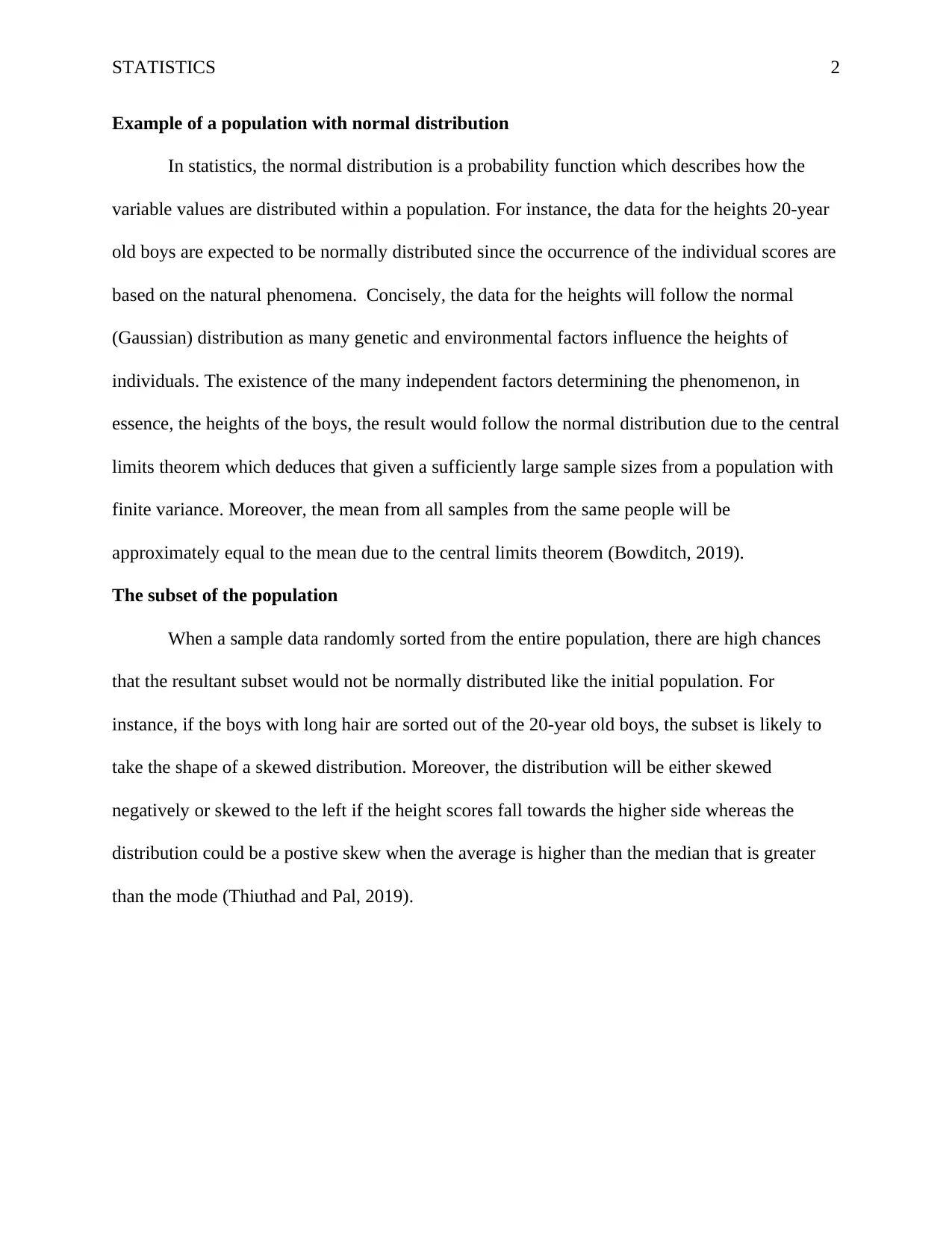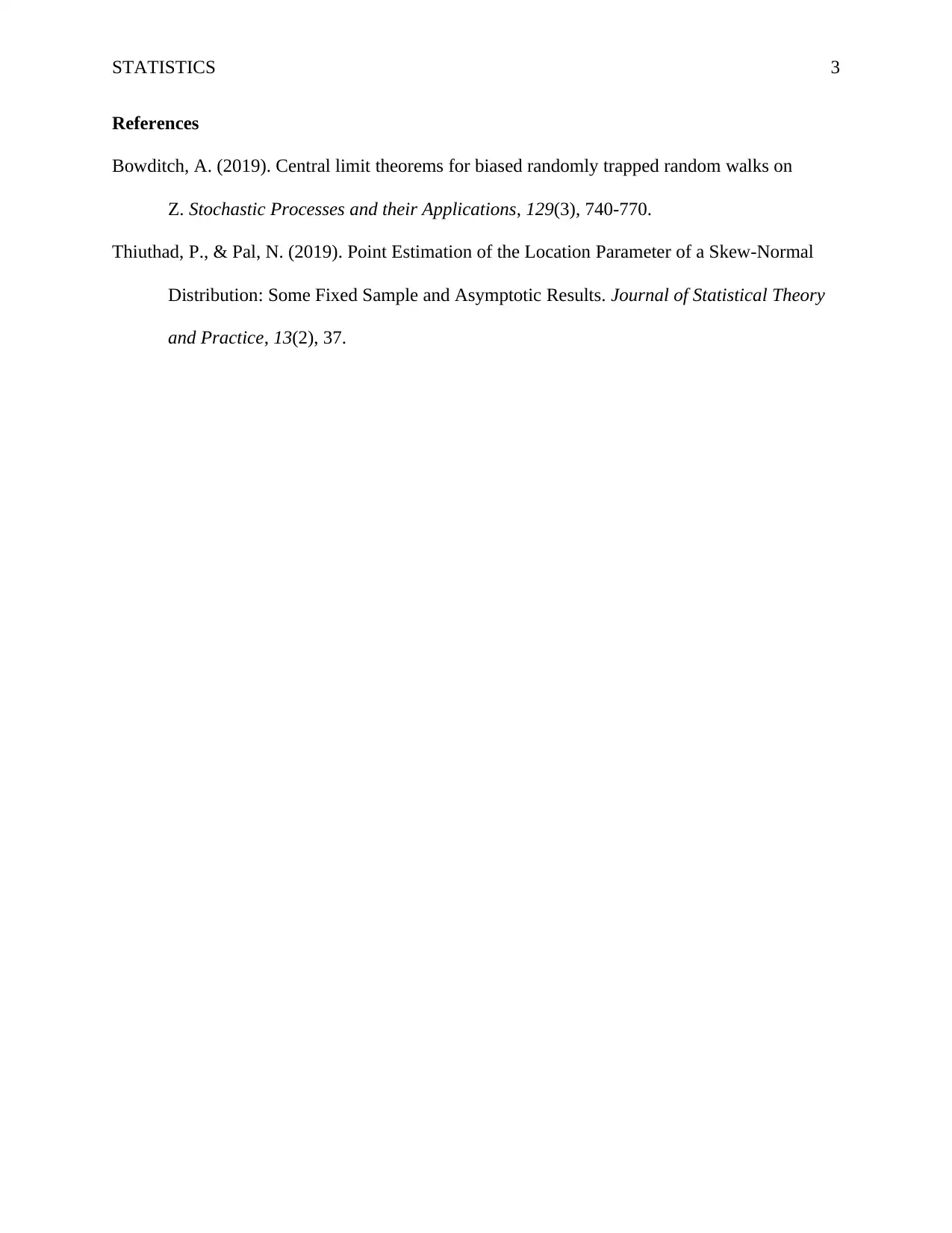Statistics Assignment: Normal Distribution, Sample Data, and Skewness
VerifiedAdded on 2022/12/26
|3
|382
|69
Homework Assignment
AI Summary
This assignment delves into the concept of normal distribution within statistics, exploring its application and relevance through an analysis of sample data. The assignment discusses how the normal distribution, a probability function, is used to model and understand data, such as the heights of 20-year-old boys, where multiple factors influence the outcome, leading to a normal distribution. The central limit theorem is highlighted to explain how sample means tend towards the population mean, which is essential for understanding data variability. The assignment then contrasts the normal distribution with the skewed distribution that can result from specific sample selections, such as boys with long hair. It explains how the skewness can appear in the data and how the mean and median values affect the shape of the distribution. The references provided support the concepts discussed, offering deeper insights into the theoretical aspects of normal distribution and related statistical analyses.
1 out of 3










![[object Object]](/_next/static/media/star-bottom.7253800d.svg)